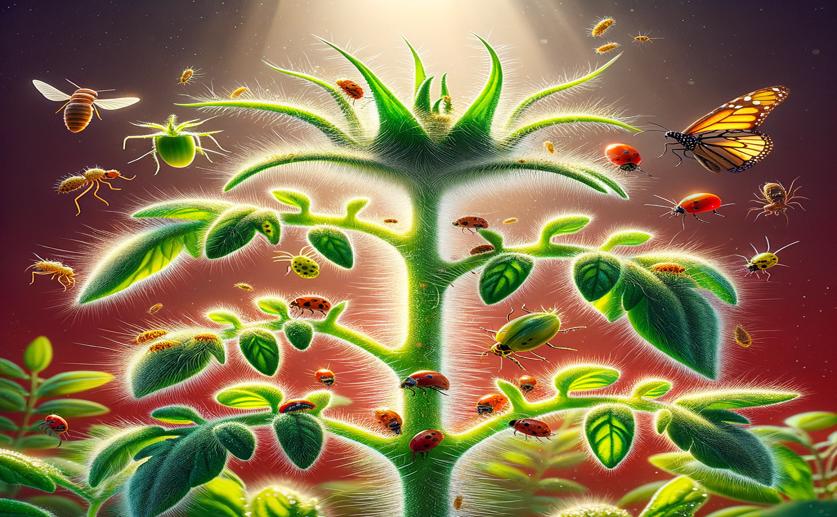
Tomato Plant Hairs Affect Pests and Their Predators
Jenn Hoskins
15th May, 2024

Image Source: Natural Science News, 2024
Key Findings
- The study examined the impact of different trichome types on spider mite behavior on six tomato cultivars and two wild Solanum species
- Trichome types I and IV on the petiole significantly affected mite settlement and dispersal, while types V and VI did not
- The predatory mite T. (A.) recki effectively controlled spider mite populations regardless of trichome structure, suggesting its potential as a biological control agent
AgricultureEcologyPlant Science
References
Main Study
1) Plant, pest and predator interplay: tomato trichomes effects on Tetranychus urticae (Koch) and the predatory mite Typhlodromus (Anthoseius) recki Wainstein.
Published 14th May, 2024
https://doi.org/10.1007/s10493-024-00917-4
Related Studies
2) Resistance to the two-spotted spider mite (Tetranychus urticae) by acylsucroses of wild tomato (Solanum pimpinellifolium) trichomes studied in a recombinant inbred line population.
3) Control of Aculops lycopersici with the Predatory Mite Transeius montdorensis.
4) Accumulation and turnover of 2-tridecanone in Tetranychus urticae and its consequences for resistance of wild and cultivated tomatoes.
Journal: Experimental & applied acarology, Issue: Vol 23, Issue 12, Dec 1999



 26th January, 2024 | Jenn Hoskins
26th January, 2024 | Jenn Hoskins